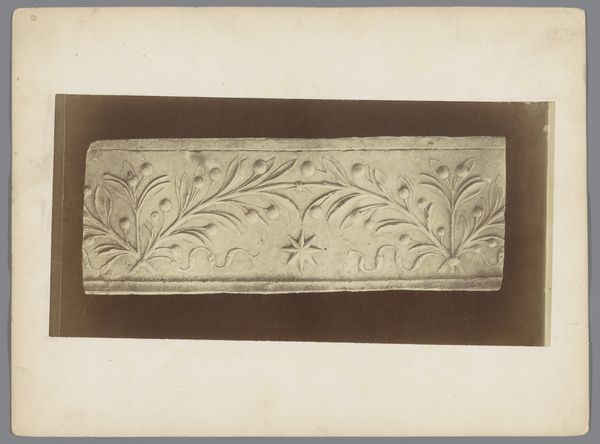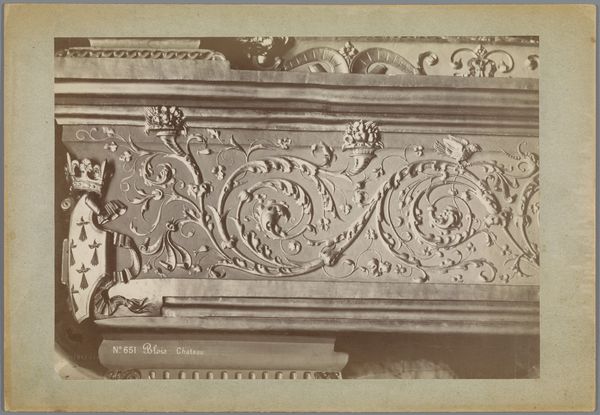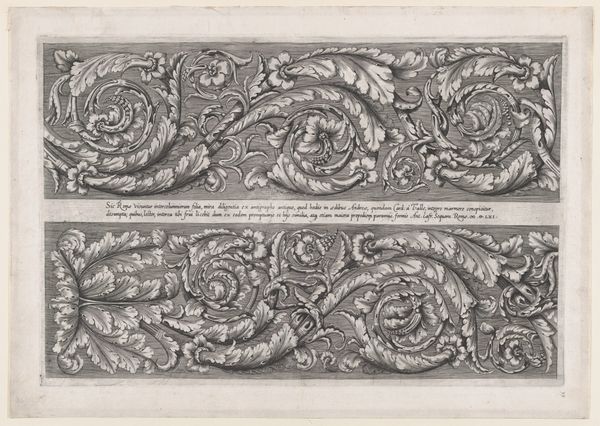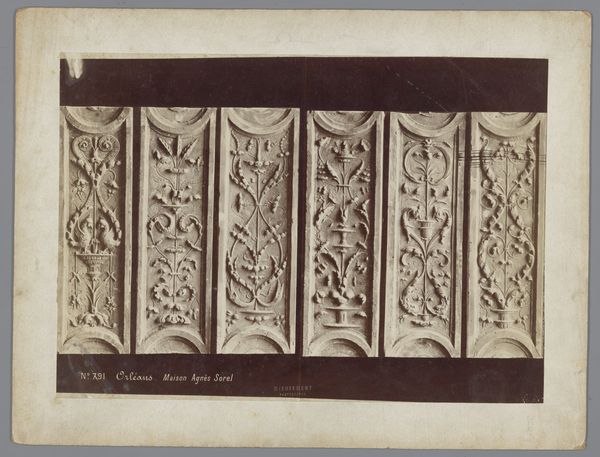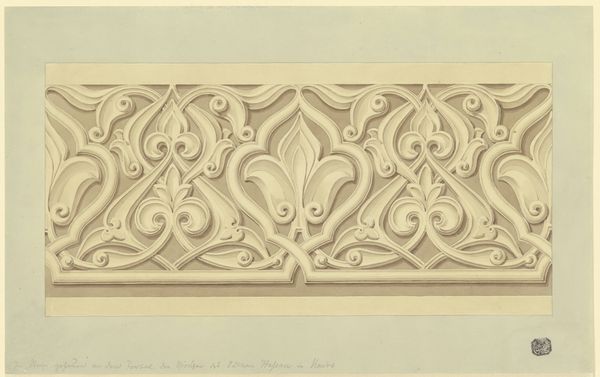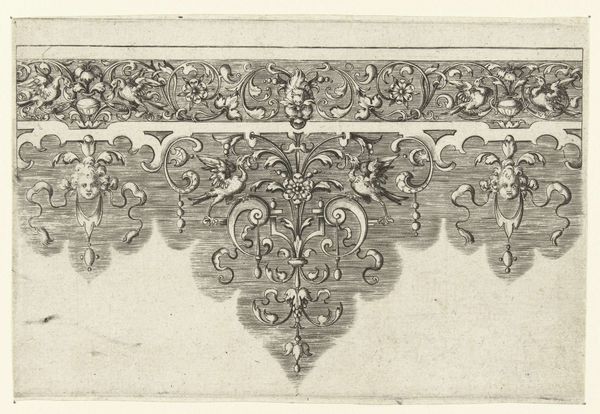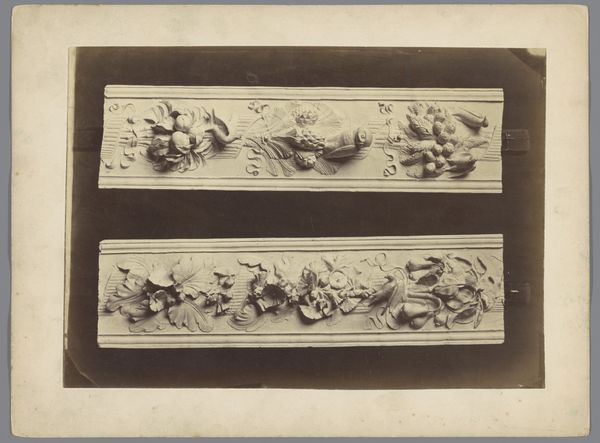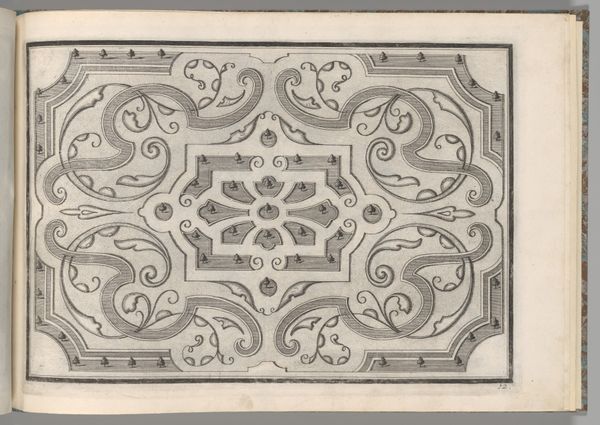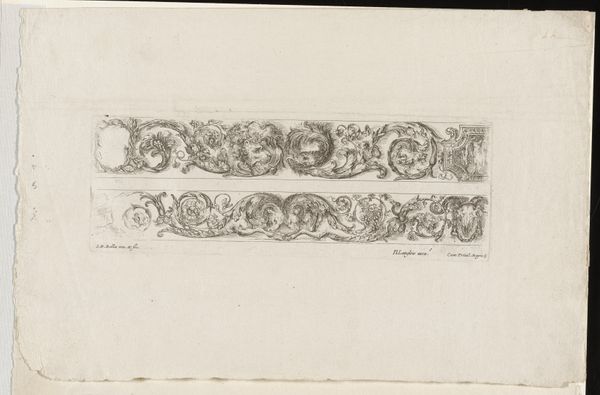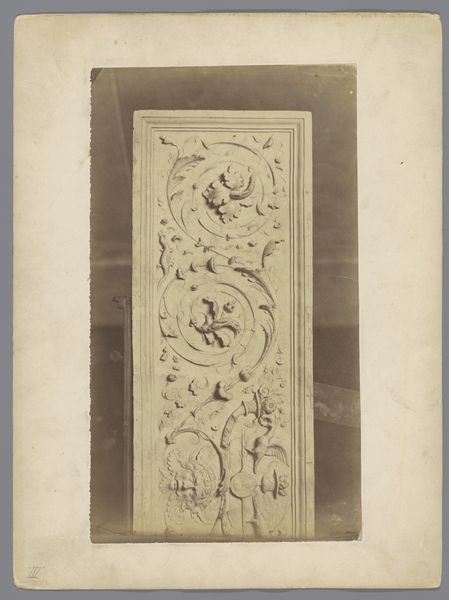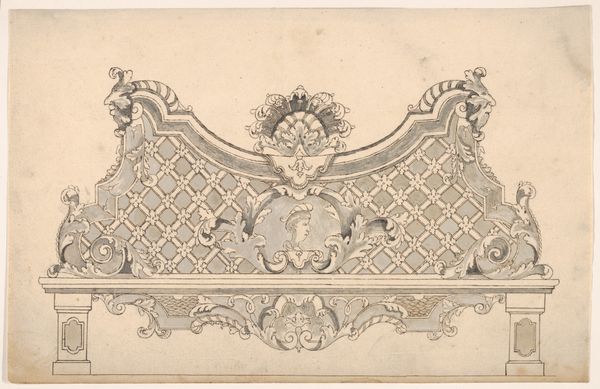
Twee reliëfs met bladmotieven en vogels afkomstig uit de abdij van Saint-Gilles-du-Gard c. 1875 - 1900
0:00
0:00
medericmieusement
Rijksmuseum
carving, print, relief, photography, sculpture, marble
#
carving
# print
#
relief
#
landscape
#
photography
#
romanesque
#
sculpture
#
decorative-art
#
marble
Dimensions: height 353 mm, width 248 mm
Copyright: Rijks Museum: Open Domain
Curator: This photograph, taken by Médéric Mieusement between 1875 and 1900, captures two relief carvings featuring leaf motifs and birds. They originate from the abbey of Saint-Gilles-du-Gard, and this print is held at the Rijksmuseum. Editor: Immediately, I see these lush carvings trapped within a rigid photographic frame. There’s something melancholic about that—like a pressed flower, beautiful but definitively removed from its natural setting and function. Curator: Precisely. And what intrigues me is the medium – it's a photograph *of* a marble relief. The act of reproduction upon reproduction invites a question: what is the value assigned at each stage of image creation and how are they perceived? Is this documenting artistry or something entirely new? Editor: I suppose the photograph elevates the craft of stone carving, making it available for wider study but losing tactile knowledge along the way. Does marble dust smell different when it's turned to the photograph or perhaps feels more alive because sunlight used to touch it directly outside? Curator: Think about it! The original relief likely adorned the abbey's facade, engaging directly with weathering and other tangible factors – a testament to a carver's mastery of marble. The photograph, a product of advancements in technology and chemistry, captures a fleeting moment in the relief's history. The photograph can mass circulate and live within diverse socio-economic spheres. It alters access dramatically, from the space of a once religious building to now mass accessibility within capitalist means. Editor: What strikes me is the tension between stillness and dynamism. The leaves are intricately carved, suggesting movement, growth and vitality, even these sculpted birds look on the cusp of flight. The photographic medium however completely freezes those possibilities. The photograph also captures an era when such decorative arts were slowly falling out of mainstream architecture—a form on the verge of being lost like the lost marble dust aroma? Curator: It underlines that very complex exchange. A photograph is a memento frozen by technology while attempting to replicate hand craftsmanship in another format accessible through that industrial production; while perhaps altering or impacting labor or materiality directly. Editor: So, it documents craftsmanship while marking its transition to being a historic commodity. Seeing this gives pause to remember all processes involved. Curator: Exactly, thank you for such perceptive insight. It offers a powerful lens through which to examine shifts in art making and the very concept of “value” through a variety of materials.
Comments
No comments
Be the first to comment and join the conversation on the ultimate creative platform.
